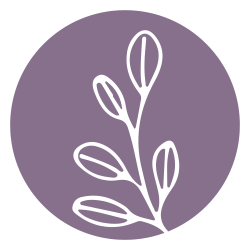PCOS is not a disease of obesity!
By Dr. Reecha Panchal, ND
How do you know if you have PCOS?
Polycystic Ovarian Syndrome (PCOS), previously known as Stein-Leventhal syndrome named after the two American gynaecologists who discovered it in 1935. It’s a common hormonal disorder affecting nearly 6-10% of women in their reproductive years (1). Unfortunately it is still being under diagnosed by many health care professionals and misrepresented in the community (2).
So how would you know if you have PCOS? Well, all women are different and experience different intensities of similar symptoms. The most common signs to look out for are:
Irregular periods or no periods - if you haven’t already, start tracking your cycle today! There are many free period tracking apps like iPeriod.
Excess hair growth all over your body, including your face (hirsutism)
Thinning scalp hair (alopecia)
Acne
Darkening and thickening of the skin on your neck, underarms, groin, and/or skin folds (acanthosis nigricans)
Cravings for sugar
Increased blood sugar levels
Difficulty losing weight, unexplained weight gain and obesity
Anxiety and/or depression
Infertility
It was commonly believed that PCOS only affected overweight women and the best way to diagnose it was by finding multiple cysts on women’s ovaries using ultrasound (3). We know now that isn’t the case.
PCOS can be diagnosed with finding two out of the three features (4,5):
Irregular periods or no periods, from a lack of ovulation (aka. oligo/amenorrhea)
Signs of higher than normal male hormones, such as abnormal hair growth, acne, thinning scalp hair (aka. hyperandrogenism)
Multiple cysts on the ovaries (aka. polycystic ovaries)
AND… insulin resistance! Although it hasn’t made it into the clinical diagnostic criteria just yet, this finding is a primary driver behind PCOS (6). When we eat, our blood sugar levels rise, in response our pancreas pumps out insulin to stimulate our muscles and liver to take the blood sugar and convert it to energy. Insulin resistance happens when the pancreas has to pump out large amounts of insulin for the body to respond. When we have too much insulin floating around in our blood, we become inflamed and overweight!
Untreated PCOS can lead to many serious complications, such as infertility and recurrent miscarriages, diabetes, heart disease, sleep apnea, nonalcoholic fatty liver disease, endometrial hyperplasia and may result in an increased risk of breast and/or uterine cancer (5,6,7).
The conventional treatments available for PCOS are birth control pills and diabetes medications. Naturopathic treatment focuses on extensive lifestyle and nutritional support, herbal supplements, and empowerment through gaining knowledge about all things PCOS.
My goal for women with PCOS is to develop an individualized health plan to sustain a lifelong journey of health and wellness. Taking into account current goals of treatment, symptoms such as abnormal hair growth, acne, weight gain and reducing the risk of developing serious health concerns.
PCOS is not a disease of obesity. It’s not a disease of a poor lifestyle or diet. It is a highly genetic condition with a complex pathophysiological onset resulting in metabolic disturbances and diverse clinical manifestations. In short, it’s NOT your fault and we can help!
References:
Bozdag G, Mumusoglu S, Zengin D, Karabulut E, Yildiz BO. The prevalence and phenotypic features of polycystic ovary syndrome: a systematic review and meta-analysis. Hum Reprod. 2016 Dec;31(12):2841-2855. doi: 10.1093/humrep/dew218. Epub 2016 Sep 22. PMID: 27664216.
Hillman SC, Dale J. Polycystic ovarian syndrome: an under-recognised problem?. Br J Gen Pract. 2018;68(670):244. doi:10.3399/bjgp18X696101
de Melo AS, Dias SV, Cavalli Rde C, Cardoso VC, Bettiol H, Barbieri MA, Ferriani RA, Vieira CS. Pathogenesis of polycystic ovary syndrome: multifactorial assessment from the foetal stage to menopause. Reproduction. 2015 Jul;150(1):R11-24. doi: 10.1530/REP-14-0499. Epub 2015 Apr 2. PMID: 25835506.
Lujan ME, Chizen DR, Pierson RA. Diagnostic criteria for polycystic ovary syndrome: pitfalls and controversies. J Obstet Gynaecol Can. 2008;30(8):671-679. doi:10.1016/S1701-2163(16)32915-2.
Goodman NF, Cobin RH, Futterweit W, Glueck JS, Legro RS, Carmina E; American Association of Clinical Endocrinologists (AACE); American College of Endocrinology (ACE); Androgen Excess and PCOS Society (AES). AMERICAN ASSOCIATION OF CLINICAL ENDOCRINOLOGISTS, AMERICAN COLLEGE OF ENDOCRINOLOGY, AND ANDROGEN EXCESS AND PCOS SOCIETY DISEASE STATE CLINICAL REVIEW: GUIDE TO THE BEST PRACTICES IN THE EVALUATION AND TREATMENT OF POLYCYSTIC OVARY SYNDROME--PART 1. Endocr Pract. 2015 Nov;21(11):1291-300. doi: 10.4158/EP15748.DSC. PMID: 26509855.
Randeva HS, Tan BK, Weickert MO, Lois K, Nestler JE, Sattar N, Lehnert H. Cardiometabolic aspects of the polycystic ovary syndrome. Endocr Rev. 2012 Oct;33(5):812-41
Rocha AL, Oliveira FR, Azevedo RC, et al: Recent advances in the understanding and management of polycystic ovary syndrome. F1000Res 26;8, 2019. pii: F1000 Faculty Rev-565. doi: 10.12688/f1000research.15318.1 eCollection 2019.

